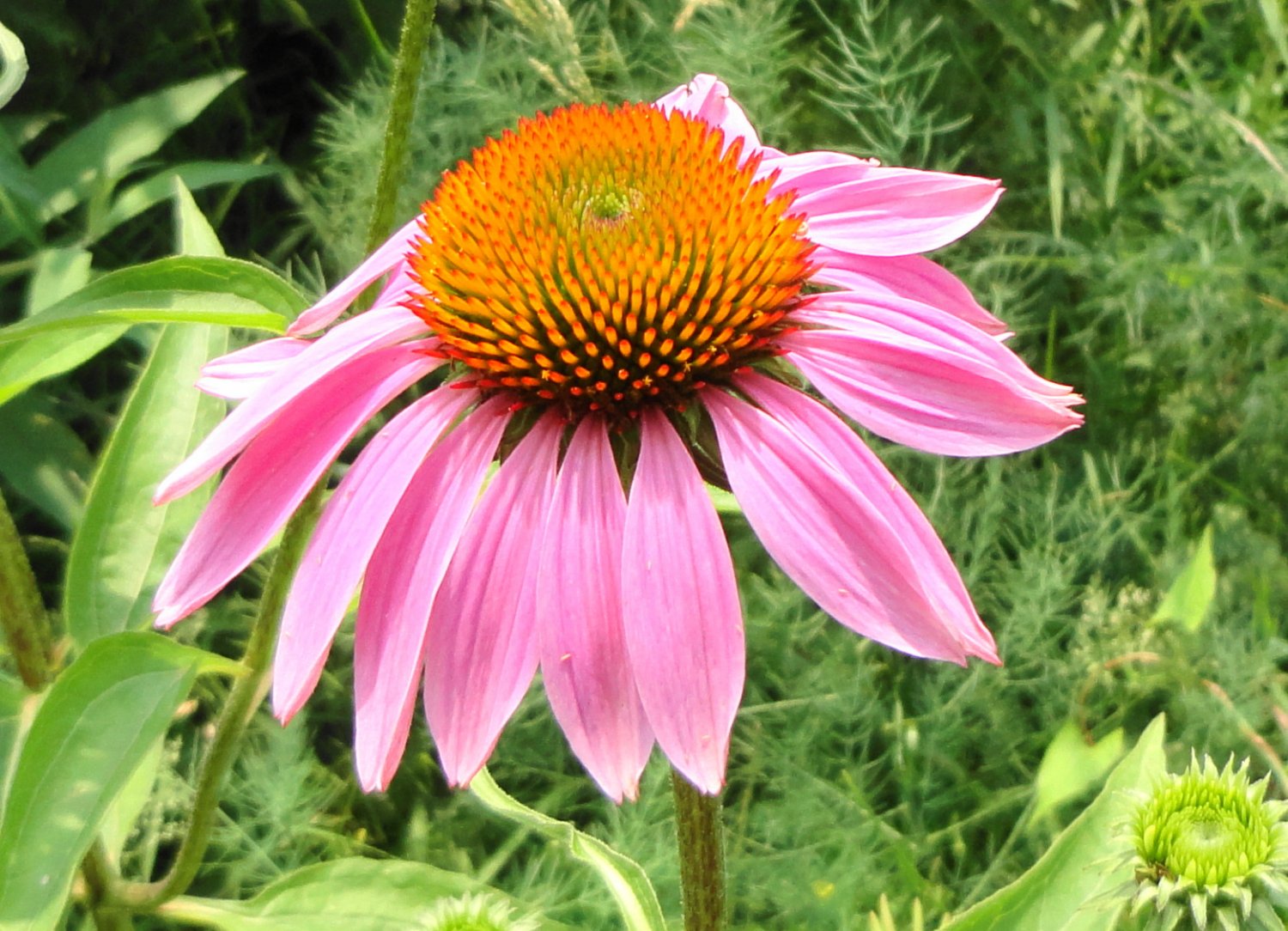

A beautiful medicinal herb, it can be taken in tea form or by extracting its healthful oils. Traditionally used in Native American medicine, Echinacea magnus is still modernly used to boost the immune system, as well as for its antidepressant properties. To control its spread, deadhead the fading flowers before they go to seed, but if you would like to attract lots of native wildlife, leave the seeds for the goldfinches and other seed eating birds. Magnus is a big hit with bees, butterflies and birds, these purple blooms will bring droves of natural pollinators to your garden.

Echinacea self sows vigorously, and will reproduce quickly under the right conditions.
#MAGNUS PURPLE CONEFLOWER FULL#
Drought resistant once established, it prefers loamy, well drained soil and will grow well in full or partial sun.

To control its spread, deadhead dying flowers before they go to seed Herb DescriptionĮchinacea 'Magnus' is a wonderful workhorse perennial in the garden with its daisy-like purple blooms with raised, conical centers! We also grow regular Echinacea Purple Coneflowers.Īs hardy as it is beautiful, echinacea magnus, a flowering herb is very self sufficient. Watering: Water regularly, but do not overwater.Ĭomments: Echinacea self-sows profusely. Magnus is a distinctive, vigorous and large growing cone flower cultivar. These plants can survive up to 5 to 6 years in the wild. Echinacea purpurea 'magnus' Herb Growing Tips The purple coneflower plant has a hairy and robust stem that can grow anywhere from 2 feet to 4 feet in height.


 0 kommentar(er)
0 kommentar(er)
